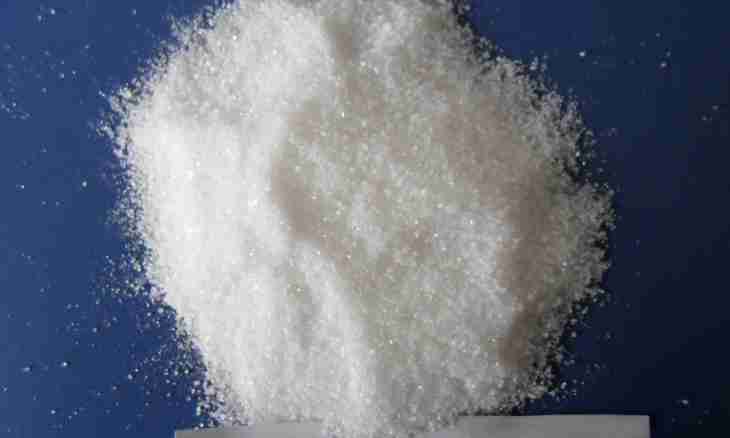Potassium is chemical element I of group of periodic Mendeleev's system, it represents silver-white, soft, light and fusible metal. It is possible to find two of its in the nature stable isotope and one slightly radioactive.
Distribution in the nature
Potassium is widespread in the nature, its content in a lithosphere is about 2.5% on weight. It is a part of micas and field spars. Potassium collects in the magmatic processes which are taking place in sour magmas then crystallizes in granites and other breeds.
This chemical element poorly migrates on the earth's surface, at aeration of rocks it partially passes into waters where it is taken organisms and is absorbed by clays. Waters of the rivers are poor in potassium, it comes to the ocean in smaller quantity, than sodium. In the ocean, potassium is absorbed by organisms, it is a part of ground silt.
Plants receive potassium from the soil, it is one of the major biogenous elements. The daily need for potassium of the adult makes 2-3 g. Potassium is concentrated mainly in cages, in the extracellular environment it is much less of it.
Physical and chemical properties
Potassium — very soft metal, without effort it is possible to knife it. It has a body-centered cubic crystal lattice. The chemical activity of this element is higher, than at other metals. It is caused by remoteness of the only valent electron of atom of potassium from a kernel. Potassium quickly is oxidized on air, especially in damp therefore it is stored in gasoline, mineral oil or kerosene. This metal very vigorously reacts with water, emitting hydrogen, sometimes this reaction is followed by explosion. It is slowly dissolved in ammonia, the blue solution received at the same time is strong reducer. At the room temperature potassium reacts with halogens, at weak heating — with sulfur, at stronger — with tellurium and selenium. At a temperature above 200 °C in the atmosphere of hydrogen it forms hydride which self-ignites on air. Potassium does not interact with nitrogen even when heating under pressure, but as a result of electric discharge forms nitride and azide of potassium. Presence of potassium is determined by violet coloring of a flame.
Receiving and application
In the industry potassium is received as a result of exchange reactions between metal sodium and hydroxide or chloride of potassium. Sometimes use potassium chloride mix heating with aluminum and lime to 200 °C. The main consumer of salts of potassium — agriculture, this chemical element are a part of potash fertilizers. Potassium alloys with sodium are used in nuclear reactors as the heat carrier and also as reducers in production of the titan. From metal potassium prepare the peroxide intended for regeneration of oxygen in submarines.

